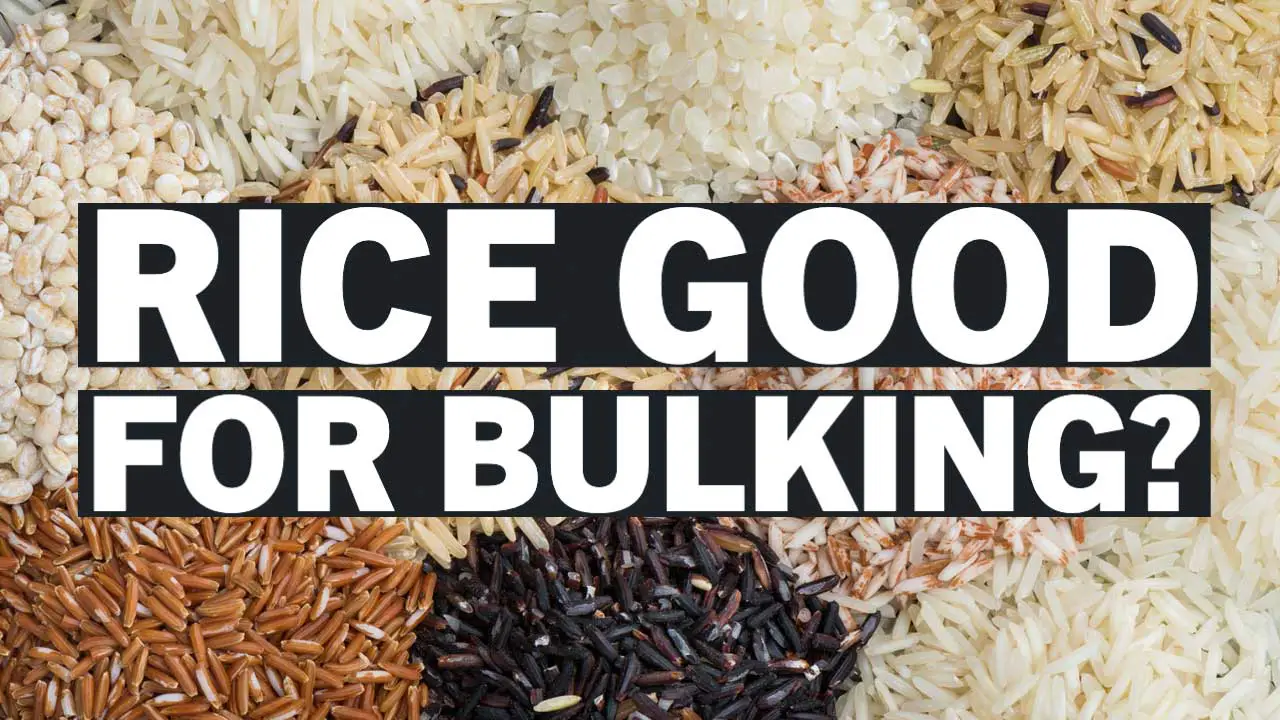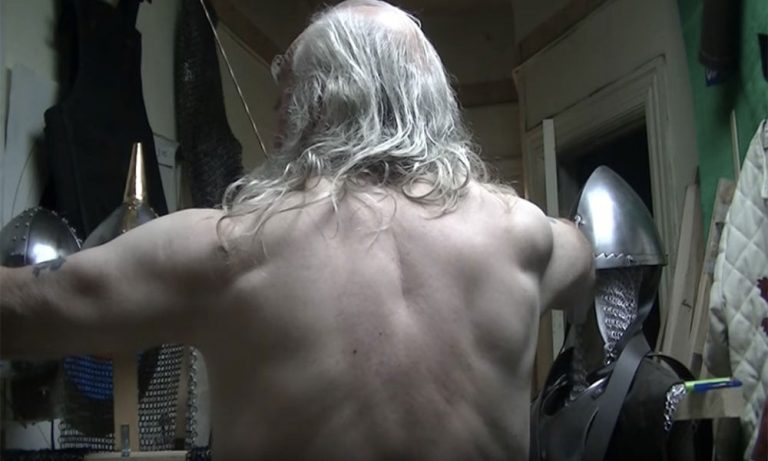Get Lean, Not Skinny: How to Cut Weight Without Losing Muscle Mass

ListedFit is reader-supported. When you buy through links on our site, we may earn a small commission.
If you’re looking to lose weight, it’s important to do it in a healthy and sustainable way. Cutting weight too quickly or without proper nutrition can result in losing muscle mass along with fat. This can leave you feeling weak and unable to perform at your best.
Fortunately, there are ways to cut weight without losing muscle. By focusing on proper nutrition and exercise, you can achieve your weight loss goals while maintaining your muscle mass.
Table of Contents
One important aspect of cutting weight without losing muscle is maintaining a calorie deficit without going too low. It’s important to find the right balance of calorie reduction that allows you to lose weight while still providing your body with the energy it needs to function properly.
Things You Need to Know About Cutting Weight Without Losing Muscle
If you’re looking to lose weight without sacrificing muscle mass, it’s important to understand the science behind weight loss and muscle preservation. Several factors can affect muscle loss during weight cutting, but with the right approach, you can achieve your desired body composition without sacrificing your hard-earned muscle.
The Science Behind Weight Loss and Muscle Preservation

When you’re in a caloric deficit, your body turns to stored energy (fat) to make up for the energy deficit. This leads to weight loss. However, when you’re cutting weight, you want to make sure that the weight you’re losing is primarily fat, not muscle.
The key to preserving muscle mass during weight loss is to maintain a balance between muscle protein synthesis (MPS) and muscle protein breakdown (MPB).
MPS is the process of building new muscle tissue, while MPB is the process of breaking down muscle tissue. When you’re in a caloric deficit, your body naturally increases MPB, which can lead to muscle loss. But you can counteract this by increasing MPS through proper nutrition and exercise.
Factors Affecting Muscle Loss During Weight Cutting
Several factors can affect muscle loss during weight cutting. These include:
- Caloric deficit: While a caloric deficit is necessary for weight loss, cutting calories too drastically can lead to muscle loss. It’s important to find the right balance between calorie reduction and muscle preservation.
- Protein intake: Protein is essential for muscle growth and repair. If you’re not consuming enough protein, your body may break down muscle tissue for energy. Aim for at least 1 gram of protein per pound of body weight per day.
- Exercise: Resistance training is essential for maintaining muscle mass during weight loss. Aim for at least 2-3 strength training sessions per week.
- Timing of meals: Eating protein-rich meals before and after exercise can help stimulate MPS and prevent muscle breakdown.
- Stress: High levels of stress can increase cortisol levels, which can lead to muscle breakdown. Practice stress-reducing techniques such as meditation and yoga.
By understanding a little about the science behind weight loss and muscle preservation, and taking the right steps to minimize muscle loss, you can cut weight without losing muscle mass.
Strategies for Cutting Weight without Losing Muscle
If you’re looking to cut weight without losing muscle, your diet is going to play a crucial role. Here are some dietary strategies that you can follow to achieve your goal:
This video by DietDoctor is very useful:
Caloric Deficit and Macronutrient Ratio
When you’re trying to cut weight, you need to be in a caloric deficit. But you need to make sure that you’re not cutting too many calories, or you’ll risk losing muscle mass. According to the Mayo Clinic, you can safely cut 500 to 1,000 calories a day to lose weight. Start by dropping your calories by 200 per day for the first week, and build from there.
It’s also important to pay attention to your macronutrient ratio. To preserve muscle mass, you need to consume enough protein. Aim for at least 1 gram of protein per pound of bodyweight. Get your protein from clean sources like lean meats, nuts, eggs, fish, over supplements.
Timing and Frequency of Meals
When you’re trying to preserve muscle mass, it’s important to spread out your protein intake throughout the day. Aim to consume protein with every meal and snack. This will help keep your muscles fueled and prevent muscle breakdown.
It’s also important to pay attention to the timing of your meals. Try to consume a protein-rich meal or snack within 30 minutes of finishing your workout. This will help kickstart the muscle repair and recovery process.
- Spread out your protein intake throughout the day
- Consume protein with every meal and snack
- Eat a protein-rich meal or snack within 30 minutes of finishing your workout
Supplements for Muscle Preservation
There are a variety of supplements that can help you preserve muscle mass while cutting weight. Here are a few to consider:

- Branched Chain Amino Acids (BCAAs): BCAAs are essential amino acids that must come from the diet. They can help prevent muscle breakdown during periods of calorie restriction.
- Creatine: Creatine can be very helpful but it’s not a must have for muscle preservation. Creatine give you more energy when you are weight training and enables you to train for longer. But it’s important to note that creatine makes you retain water so your readout on the scale may confuse you if you are taking creatine.
- Whey Protein: Whey protein is a high-quality protein source that can help you meet your daily protein requirements if you struggle to get them from whole foods or need the convenience. It’s also easily digestible and can be consumed as a post-workout shake. If you can’t get your protein from whole-food sources, then a whey protein supplement if the next best thing.
Training Strategies to Cut Weight without Losing Muscle
Resistance Training
When cutting weight, it’s important to maintain muscle mass. One way to do this is through resistance training. Focus on compound exercises that work multiple muscle groups at once. This will help you burn fat and maintain muscle mass. Aim to lift heavy weights with low reps, and gradually increase the weight over time. This will help you build strength and maintain muscle mass.
It’s also important to give your muscles time to recover. Allow at least 48 hours between resistance training sessions for each muscle group. This will give your muscles time to repair and grow.
Cardio
Cardiovascular training is important for burning fat and improving cardiovascular health. However, it’s important to balance cardio training with resistance training to maintain muscle mass. Aim for moderate- to high-intensity cardio for at least 150 minutes per week. Examples include cycling, running, boxing, and soccer.
It’s also important to vary your cardio workouts to prevent boredom and challenge your body. Try different types of cardio, such as HIIT (high-intensity interval training) or steady-state cardio.
Recover in the Right Way
Recovery is just as important as training when it comes to cutting weight without losing muscle. One of the most effective things is making sure to get enough sleep each night, as this is when your body repairs and recovers. Aim for at least 7-9 hours of sleep per night.
Getting in the right nutrition when you’re not training is also very important for recovery. Make sure you’re getting your macros, not just protein to support muscle growth and repair but carbs and fats too. Aim for at least 1 gram of protein per pound of body weight per day. It’s also important to eat enough calories to support your training, but not so many that you end up putting on weight.
Finally, consider incorporating recovery strategies such as foam rolling, stretching, and massage. These can help improve flexibility, reduce muscle soreness, and improve recovery time.
Lifestyle Changes That Make Cutting Without Muscle Loss Much Easier
Sleep and Stress Management
Getting enough sleep and managing stress levels are crucial for weight cutting without muscle loss. Lack of sleep and high levels of stress can lead to increased cortisol levels, which can cause muscle breakdown and hinder weight loss. Aim for 7-9 hours of sleep per night and try to incorporate stress-reducing activities such as meditation, yoga, or even reading into your daily routine, anything that will help you relax.
Hydration and Electrolyte Balance

Proper hydration and electrolyte balance are important for maintaining muscle mass and optimizing weight loss. Drink plenty of water throughout the day and consider adding electrolyte-rich drinks or supplements to your routine. Be cautious of overhydration, which can lead to electrolyte imbalances.
Do You Drink Alcohol and Smoke?
Limiting alcohol intake and quitting smoking can also support weight cutting without muscle loss. Alcohol can interfere with muscle recovery and lead to dehydration, while smoking can impair lung function and hinder physical performance. Consider reducing or eliminating alcohol and tobacco alotgether to optimize your weight cutting efforts.
Making these changes can support your weight cutting goals without sacrificing muscle mass. Remember to prioritize rest, hydration, and healthy habits for optimal results.
Conclusion
Cutting weight without losing muscle can be a challenging task, but it is possible to achieve your goals with the right approach. By combining a well-balanced diet, regular exercise, and proper rest, you can safely and effectively lose weight without sacrificing your hard-earned muscle mass.
Remember to focus on reducing body fat gradually, aiming for a weight loss of around 1-1.5 pounds per week. This will help you maintain your muscle mass and avoid the negative effects of rapid weight loss.
Additionally, make sure to include plenty of protein in your diet to support muscle growth and recovery. Aim for at least 1 gram of protein per pound of body weight per day, and consider supplementing with protein powder or other high-quality protein sources if necessary.
Finally, don’t forget to listen to your body and adjust your approach as needed. Everyone’s body is different, and what works for one person may not work for another. Be patient, stay consistent, and don’t give up. With time and effort, you can achieve your weight loss goals while maintaining your muscle mass and overall health.
Author
- Danny Loeb is a qualified Personal Trainer, Fitness Model and Writer. He enjoys blogging about health and fitness, messing around with Photoshop, and sharing his experiences with everyone.
Latest entries
 NutritionFebruary 6, 2024What Are Fillers in Supplements? – Unveiling Inactive Ingredients
NutritionFebruary 6, 2024What Are Fillers in Supplements? – Unveiling Inactive Ingredients FitnessAugust 23, 2023Best Post-Workout Foods: Great Ideas for Recovery and Results
FitnessAugust 23, 2023Best Post-Workout Foods: Great Ideas for Recovery and Results BulkingJuly 26, 2023Is Rice Good for Bulking? Unveiling the Truth
BulkingJuly 26, 2023Is Rice Good for Bulking? Unveiling the Truth CultureJuly 15, 2023Why Do People Hate Planet Fitness? Read This Before You Join!
CultureJuly 15, 2023Why Do People Hate Planet Fitness? Read This Before You Join!
Affiliates:
This post may contain affiliate links that at no additional cost to you, the site may earn a small commission. We only recommend products we would use ourselves and all opinions expressed on this site are our own.
General Advice:
The information provided in this article is for general informational purposes only. It is not intended as a substitute for professional advice. Always consult with a qualified healthcare professional before starting any new diet, exercise program, or making changes to your health routine.
Accuracy Advice:
While we strive to provide up-to-date and accurate information, the content in this article may not reflect the most current research or medical guidelines. We encourage readers to do further research and consult with professionals for more personalized advice.
Our Recommendations:
The products and services mentioned in any of our articles are recommended based on our independent research and personal experience. We are not sponsored by any company. We aim to suggest products and services we believe are of high quality and could be beneficial to our readers.






